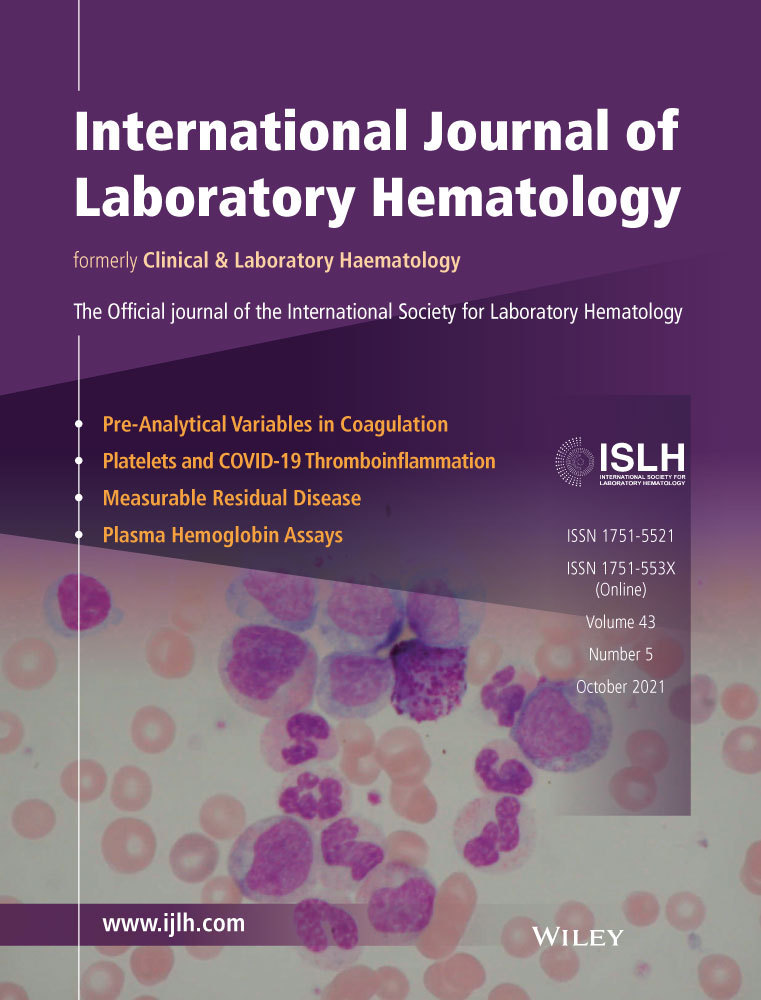Assessment of positive iron balance in end-stage renal disease: Could hepcidin-25 be useful?
Abstract
Introduction
The aim of our study was to examine the relationship of hepcidin-25 with red blood cell and reticulocyte indices and to evaluate the diagnostic properties of hepcidin-25 in the assessment of positive iron balance in end-stage renal disease (ESRD) patients.
Methods
Eighty anemic ESRD patients (hemoglobin < 110 g/L) were classified as having iron deficiency (ID, N = 20), iron sufficiency (IS, N = 29), and positive iron balance (PB, N = 31) using the conventional biomarkers for iron status evaluation. Hepcidin-25 was determined by a chemiluminescent direct ELISA.
Results
Hepcidin-25 was significantly negatively correlated with the proportion of hypochromic erythrocytes (%HYPO) (P = .034) and immature reticulocyte fraction (P = .010) in ID and with the absolute reticulocyte concentration in ID (P = .048) and PB (P = .040). In multivariate models, hepcidin-25 was independently negatively associated with the mean reticulocyte hemoglobin content (CHr; β = −0.493, P = .004) and red blood cell size factor (RSf) (β = −0.334, P = .036) only in the PB group. The best hepcidin-25 value to exclude PB was 66.13 µg/L, showing a sensitivity of 61.3%, a specificity of 75.5%, and an AUC of 0.808.
Conclusion
Our results suggest that hepcidin-25 levels are independently negatively associated with the iron demand for the most recent erythropoiesis only in PB. Hepcidin-25 performed acceptable in discriminating anemic ESRD patients with positive iron balance and may prove to be a useful additional tool in the evaluation of iron status.
CONFLICT OF INTEREST
The authors declare that they have no conflict of interest.
Open Research
DATA AVAILABILITY STATEMENT
The data that support the findings of this study are available from the corresponding author upon reasonable request.




